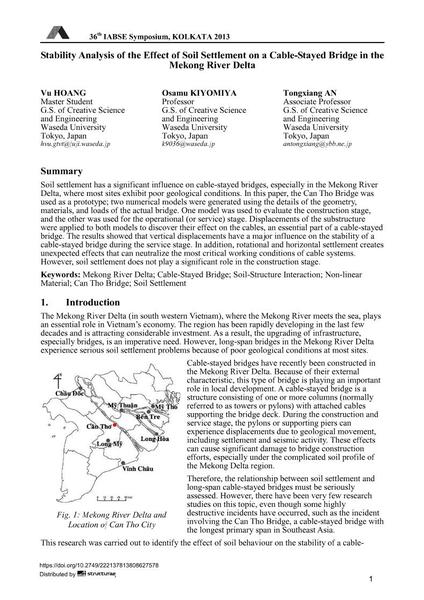Stability Analysis of the Effect of Soil Settlement on a Cable-Stayed Bridge in the Mekong River Delta

|
|
|||||||||||
Détails bibliographiques
| Auteur(s): |
Vu Hoang
Osamu Kiyomiya Tongxiang An |
||||
|---|---|---|---|---|---|
| Médium: | papier de conférence | ||||
| Langue(s): | anglais | ||||
| Conférence: | IABSE Symposium: Long Span Bridges and Roofs - Development, Design and Implementation, Kolkata, India, 24-27 September 2013 | ||||
| Publié dans: | IABSE Symposium Kolkata 2013 | ||||
|
|||||
| Page(s): | 1-8 | ||||
| Nombre total de pages (du PDF): | 8 | ||||
| Année: | 2013 | ||||
| DOI: | 10.2749/222137813808627578 | ||||
| Abstrait: |
Soil settlement has a significant influence on cable-stayed bridges, especially in the Mekong River Delta, where most sites exhibit poor geological conditions. In this paper, the Can Tho Bridge was used as a prototype; two numerical models were generated using the details of the geometry, materials, and loads of the actual bridge. One model was used to evaluate the construction stage, and the other was used for the operational (or service) stage. Displacements of the substructure were applied to both models to discover their effect on the cables, an essential part of a cable-stayed bridge. The results showed that vertical displacements have a major influence on the stability of a cable-stayed bridge during the service stage. In addition, rotational and horizontal settlement creates unexpected effects that can neutralize the most critical working conditions of cable systems. However, soil settlement does not play a significant role in the construction stage. |
||||
| Mots-clé: |
Pont à haubans
|
||||

